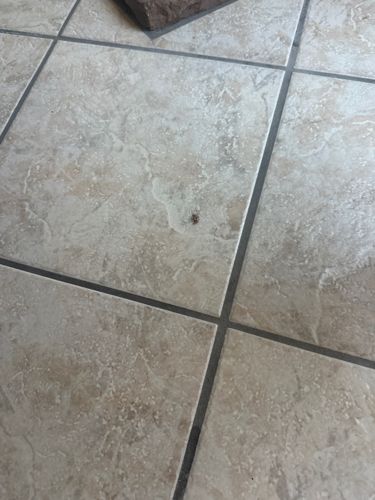Carpet Beetle (likely Varied Carpet Beetle or Black Carpet Beetle)
Scientific Name: Most likely 'Anthrenus verbasci' (Varied Carpet Beetle) or 'Attagenus unicolor' (Black Carpet Beetle), given the appearance and commonality.
Order & Family: Order: Coleoptera, Family: Dermestidae
Size: Adults typically range from 2-5 mm (0.08-0.2 inches) in length. Larvae can be slightly larger, up to 5-6 mm.

Natural Habitat
Indoors, larvae are found in carpets, rugs, upholstered furniture, clothing, furs, stored food areas, and undisturbed spaces like under furniture or in attics. Outdoors, adults are common on flowers, especially those with yellow or white petals.
Diet & Feeding
Larvae primarily feed on natural fibers rich in keratin, such as wool, silk, fur, feathers, and dried animal products. They can also consume stored food products, pet food, and dead insects. Adult carpet beetles feed on pollen and nectar from outdoor flowers.
Behavior Patterns
Carpet beetles undergo complete metamorphosis, with eggs hatching into larvae. The larvae are the damaging stage, feeding on various organic materials. Adults are typically found near windows as they are attracted to light, or outdoors on flowers. They are generally slow-moving. Larvae often hide in dark, undisturbed areas.
Risks & Benefits
Risks: Carpet beetle larvae are common household pests that can cause significant damage to fabrics, clothing, carpets, and museum specimens. They are not known to bite humans, but some people may develop skin irritations or allergic reactions to their bristles. Benefits: In natural settings, they act as decomposers, helping to break down organic matter.
Identified on: 9/3/2025